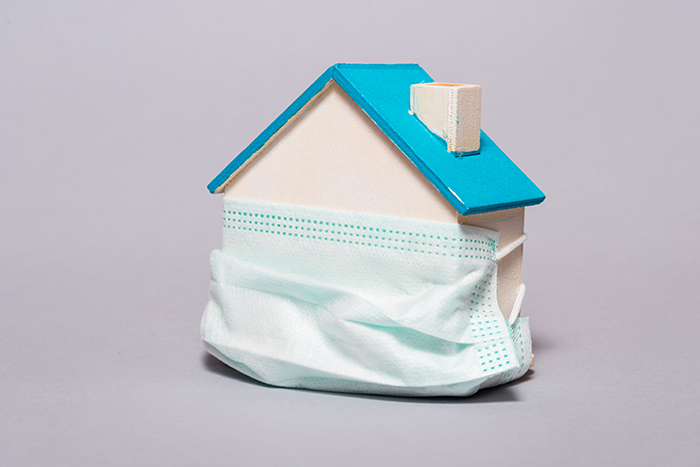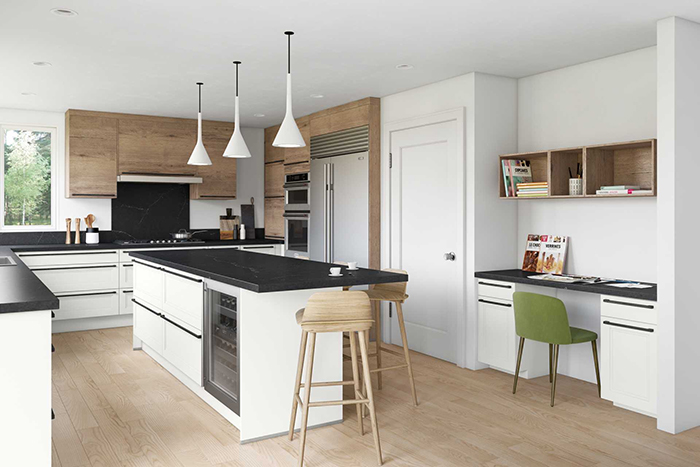Interior Design and Renovating Industry Seeing Changing Times

©By mdbildes - stock.adobe.com
March 26, 2021
By Andreina Tinoco, Head of Design at FORM Kitchens.
COVID has had profound effects on the interior design industry. Homeowners are spending more time than ever at home, and with more than $68.6 billion dollars expected to be spent on residential remodeling in 2021 alone, interior design is expected to have a banner year.
Remodeling during COVID comes with its own set of challenges. More than ever, consumers are looking to maximize their bang for their buck. At the same time, consumers are increasingly looking to online influencers for guidance and inspiration. This has created a perfect storm for newcomers and tech giants alike to disrupt the traditional interior design industry. Using remote technologies, augmented reality and customizable mass production, these new players are simplifying the interior design process and bringing down costs for every area of the home.
Nowhere is this more apparent than in the kitchen. Formerly centered around cooking and shared experiences, the kitchen now often must suit the expanded needs of the family, adapting to become a space for work, play and exercise. The challenge of maximizing utility while adhering to clean design principles has led to the creation of new and innovative ideas within the interior design industry.
With this in mind, here are a few kitchen design trends that have been directly affected by COVID.

Luxury is increasingly seen by homeowners as the ability to create their own retreat. Credit: FORM Kitchens 2021
Blurring Boundaries Between the Home Office and the Kitchen
The boundaries between home and work have merged as a result of COVID-19. This is not temporary but likely a permanent development that sums up the ‘new normal’ and its direct impact on our daily lives. One of the biggest impacts of this is the changing nature of the kitchen as an extension of the home office, which has led to new layout and design considerations.
Client requests that were previously niche and unusual are becoming commonplace. Work-from-home stations are fast becoming a staple in kitchens. Space permitting, this may mean a dedicated desk space within (or adjacent to) the kitchen, with comfortable seating for one or two people.
Many clients are also rethinking the function of an island or peninsula in their kitchen, with additional work-from-home space in mind. As such, a lower counter height is more appropriate (rather than bar height), as are counter stools with a back (rather than backless bar stools).
The concept of making a space work harder for you has taken on a whole new meaning in the ‘new normal.’ Flexible and multifunctional design has been gaining traction for years, especially in densely populated urban centers where space is at a premium. But now this is even more important than before, with clever design solutions for spaces of every shape and size sought out by homeowners all over the country.
With this new work-from-home setup comes a need to power up all our devices. Sockets in the sides or along the back of an island are a must if you are to avoid trip hazards around the kitchen. The same goes for the wall space around a peninsula. As electronics are difficult to retrofit, current as well as potential future needs should be considered at the appropriate stage of every project.
A New Focus on Health and Well-Being
The COVID-19 crisis has been all about health (public and individual). And so it is no surprise that health and well-being themes are now front and center in design and decorating decisions. In retreating ever more into our homes, we are seeking to create a safe and comfortable space for us and our loved ones.
For many people, luxury is no longer about size, scale or opulence. Instead, it is increasingly understood by homeowners as the ability to create our own cocoon or a retreat. Understated, cozy and comfortable spaces can help us feel better about ourselves and the world around us. We are seeing this trend playing out in kitchen design as much as interior design more broadly.
As an extension, we are finding that the predominant color scheme has softened over the course of last year. Although gray remains one of the favorite colors in kitchen design, there has been a clear shift to softer and warmer grays. Warmer still, taupe and off white are also popular.
In the same vein, the natural warmth of wood-effect kitchen fronts clearly appeals to many homeowners right now. Most of the kitchens we design have an element of a wood effect, typically in combination with white, gray or black. From lighter oak to darker and deeper walnut, we are seeing the full spectrum of natural hues being embraced by our clients.
Part of the reason for this is the nature deficit most of us have been suffering from recently – even more so than normally. With so much time spent indoors, the need for increased connection with nature is manifesting itself in our decor decisions. In addition, given the increased interest and focus on sustainability, we think the popularity of wood is here to stay.

Well designed and curated storage is now a must. Credit: FORM Kitchens 2021
More Storage Space
One practical aspect that has changed is the need for more storage space in the kitchen. In particular, within the kitchens of people who cook from scratch – and that is an increasing proportion of our clients – kitchen storage requirements have gone up further. Spacious pantries and wide drawers, as well as wall-to-wall and floor-to-ceiling storage solutions, have never been more popular.
Admittedly, it is not just about the quantity of stuff. There is clearly a drive to more curated and less messy homes, inspired by ideals of minimalist living. Stuff everywhere can be tiring to look at and dangerous to navigate around, and nowhere do we store quite as much as in the kitchen. On the one hand, we are all spending more time at home and seeking to create a calm oasis. On the other hand, we are storing more stuff. It follows that well-designed and curated storage is now a must.
For some homeowners, this backdrop also translates into a need to double up in the kitchen. For those who don’t already have two ovens, two sinks, two dishwashers or an extra freezer, now may be the time to consider an upgrade. For example, a large and a small sink combination – each serving different purposes – is a practical setup for larger households. Doubling up on dishwashers is also a good idea for anyone struggling to stay on top of the dishes.
We are excited to see how the very definition of a kitchen will change over time for the average American. As ever, challenges spell opportunities. We believe that designers will have to readjust their understanding of what a kitchen is or can be, as much as homeowners. Whoever said that change is the only constant definitely had a point.
More News
April 18, 2024 | Business, People
Excelling at Kitchen Design When You Don’t Like to Cook
April 18, 2024 | Awards & Events
KCMA Design Awards Announces Winners
April 17, 2024 | People
WAC Lighting Promotes Becky Li to President
April 16, 2024 | Awards & Events
Kips Bay Boys & Girls Club Honors Ellie Cullman, Cosentino
April 15, 2024 | Trends & Inspirations
Houzz: Renovation Slows, but Design Pros Optimistic
April 2, 2024 | Sponsored
Whirlpool Corp. Brings Purposeful Innovation Home